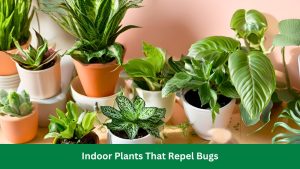
Container Eggplant Varieties Tips for Optimal Growth
Container eggplant varieties are compact plants suitable for small gardens or patio containers. These varieties produce high yields of delicious eggplants, making them ideal for urban gardening or limited space.
They offer all the benefits of traditional eggplant varieties in a smaller package, making them perfect for container gardening enthusiasts. With their adaptability to different growing conditions, these container-friendly eggplants are an excellent option for those looking to grow their fresh produce in a limited space.
Whether you have a small balcony or a small backyard, container eggplant varieties allow you to enjoy the satisfaction of growing your eggplants.
What Are Container Eggplant Varieties?
Eggplants, or aubergines, are delicious and versatile vegetables enjoyed in various dishes. While traditionally grown in garden beds, container eggplant varieties have gained popularity among urban gardeners and those with limited space.
Container eggplant varieties are specially bred to thrive in pots, making them an ideal choice for small gardens, balconies, or even indoor spaces.

Definition
Container eggplant varieties are cultivars specifically bred and selected for their compact size and suitability for container gardening. These varieties typically have a smaller growth habit than their traditional counterparts, making them more suitable for confined spaces.
They are designed to be grown in containers, such as pots or raised beds, and can adapt to the limited space available.
Benefits Of Growing In Containers
Growing eggplants in containers offers several advantages:
- Space Efficiency: Container eggplants are perfect for small gardens, patios, or balconies with limited space. They take up minimal space and can be grown in pots of various sizes, making them adaptable to any available space.
- Flexibility: Since container eggplants can be easily moved around, you have the flexibility to position them in the best possible spot for optimal sunlight and temperature exposure. This is particularly beneficial if your garden area has limited direct sunlight.
- Pest Control: Container gardening allows for better pest control as you can easily monitor and protect your plants from pests and diseases. Keeping your eggplants off the ground can reduce the risk of soil-borne pests. Additionally, you can more closely observe your plants and take immediate action if any issues arise.
- Improved Yield: Contrary to the common belief that growing plants in containers results in limited yield, container eggplants can provide a bountiful harvest. You can achieve impressive yields of tasty, homegrown eggplants by providing them with suitable growing conditions and proper care.
- Aesthetics: Container eggplants create a visually appealing element in your garden. With their lush foliage and vibrant purple or white fruits, they not only provide a practical purpose but also enhance the overall beauty of your space.
Choosing The Right Container
When it comes to growing container eggplants, choosing the right container is crucial for their growth and productivity. The size and shape of the container play a significant role in providing optimal growing conditions for these delicious vegetables.
Below, we will discuss the essential considerations you must consider while selecting a suitable container for your container eggplants.
Size Considerations
The size of the container is essential for the proper development of your container eggplants. Remember, eggplants have extensive root systems, so they require a container with sufficient space to allow their roots to spread out and access nutrients effectively.
Choosing a container at least 18 inches deep and 12 to 14 inches wide is recommended to accommodate the roots and provide ample room for growth.
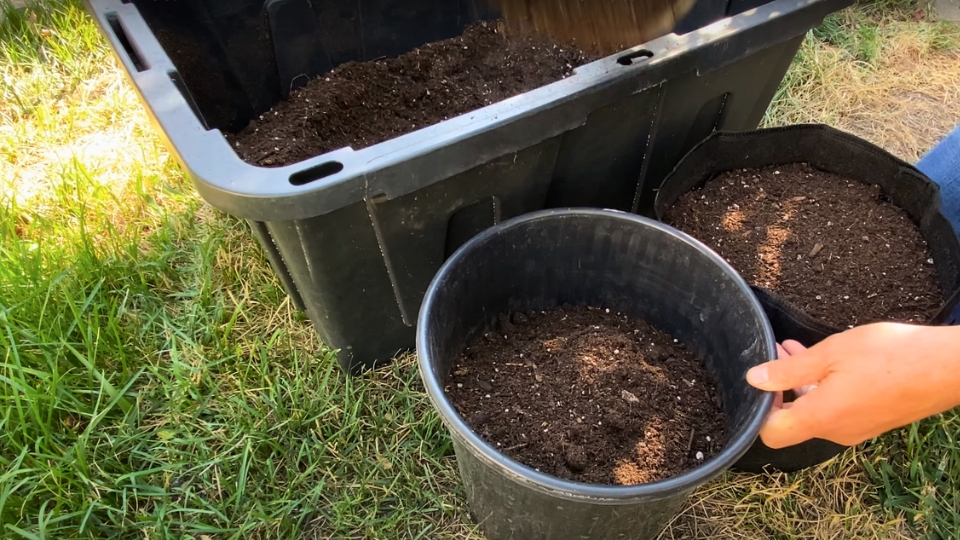
Shape Considerations
In addition to size, the shape of the container also influences the growth of your container eggplants. Opt for a container with a wider top and narrower bottom, as this shape promotes better drainage and prevents waterlogging.
Furthermore, consider using containers with a large surface area to allow more sunlight to reach the plants and promote healthy growth. Proper drainage prevents water stagnation and root rot, ensuring container eggplant growth. Choose containers with drainage holes at the bottom to meet drainage requirements. These holes allow excess water to escape and avoid waterlogging the soil.
Placing a saucer or tray beneath the container is essential to catch the draining water and prevent it from pooling around it. This may damage the plant’s roots. Remember to prioritize size, shape, and drainage requirements when selecting a container for your eggplants.
Considering these factors, you can provide your container eggplants with the perfect environment for healthy growth. This will result in a bountiful harvest of delicious and nutritious eggplants.
Preparing The Container And Soil
To prepare a container of eggplant varieties, ensure the container is suitable and the soil is well-drained. Proper preparation is vital for successful growth and development. Choose a container and soil that promotes healthy plant growth and yields a bountiful harvest.
Container eggplant varieties are an excellent option for urban gardeners or those with limited space. With some planning and techniques, you can enjoy a bountiful eggplant harvest from your container garden. The first step in this process is to prepare the container and soil for optimal growing conditions.
This article will explore the essential steps in container selection and cleaning, soil type, and amendments to promote healthy plant growth and a hearty eggplant yield.
Container Selection And Cleaning
When choosing a container for your eggplant, consider its size and material. A 5-gallon container is suitable for most eggplant varieties, providing enough room for roots to spread and establish. Opt for a high-quality plastic or ceramic container at least 12 inches deep with sufficient drainage holes to prevent waterlogging.
Proper cleaning is necessary to ensure the container is clean and free from previous plant diseases or pests. Start by scrubbing the container with mild dish soap and water. Rinse the container thoroughly to remove the soap residue.
To further sanitize the container, soak it in a solution of 1 part bleach to 10 parts water for 10 minutes, then rinse well. This process will eliminate any potential pathogens that could harm your eggplants.
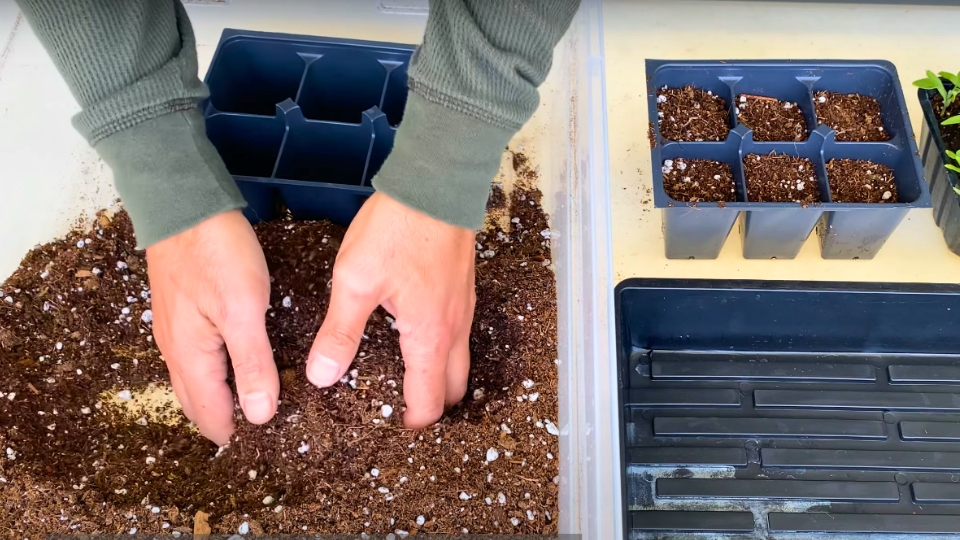
Soil Type And Amendments
Choosing the right soil type and amending it appropriately is crucial for container eggplant success. Eggplants thrive in well-drained soil rich in organic matter. For optimal results, a well-balanced potting mix is recommended. This mix should include compost, vermiculite or perlite, peat moss, or coconut coir.
In addition to the potting mix, organic amendments can further enhance soil fertility.
Add compost, aged manure, or a slow-release organic fertilizer to provide essential nutrients for your eggplants throughout the growing season. These amendments will help improve soil structure, retain moisture, and promote robust growth.
Properly preparing the container and soil is essential to give your container eggplants the best start. You can ensure healthy plant growth and a plentiful harvest of delicious eggplants by selecting the right container, cleaning it thoroughly, and providing nutrient-rich soil. Just follow these simple steps, and you’ll enjoy the fruits of your labor in no time.
Best Practices For Growing Container Eggplant Varieties
Growing eggplants in containers is an excellent option for those with limited garden space or who want to cultivate this versatile vegetable in a more controlled environment. However, following some best practices is essential to ensure your container eggplants thrive. From selecting the right variety to managing pests and diseases, here are some important tips to remember.
Selecting The Right Variety
Choosing the right eggplant variety is crucial for container gardening. Look for compact and dwarf varieties that are specifically suited to container cultivation. Some popular container eggplant varieties include Black Beauty, Fairy Tale, and Patio Baby.
Providing Optimal Sunlight
Sunlight is essential for eggplant growth and development. Place your containers in a sunny location where they receive at least 6-8 hours of direct sunlight daily. If your outdoor space doesn’t provide enough sunlight, consider using grow lights to supplement natural light.
Watering And Fertilizing Tips
Proper watering and fertilizing are essential to healthy container-grown eggplants. Keep the soil consistently moist, but avoid overwatering, as waterlogged soil can lead to root rot. A good rule of thumb is to water when the top inch of soil feels dry.
Additionally, use a balanced fertilizer formulated for vegetables to provide essential nutrients. Follow the manufacturer’s instructions for application rates and frequency.
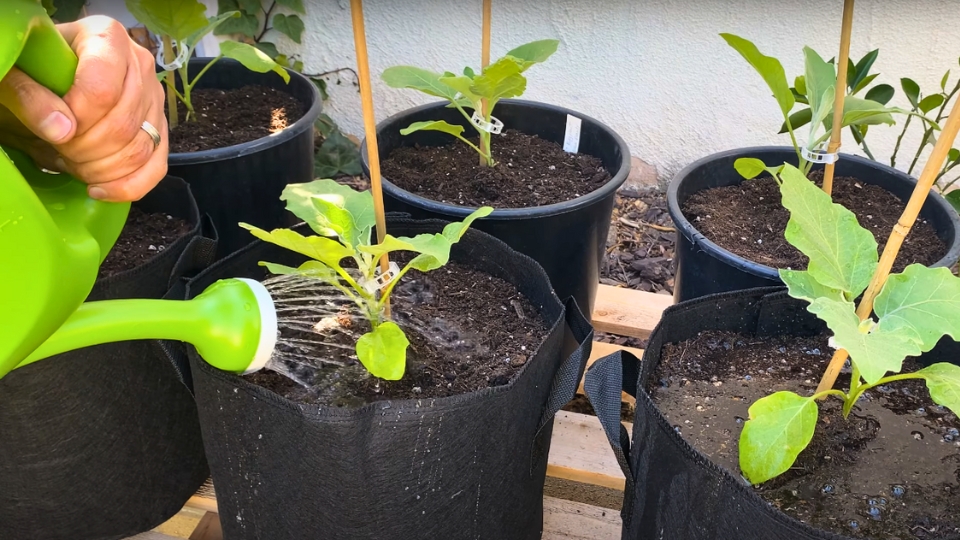
Managing Pests And Diseases
Like their garden counterparts, container-grown eggplants are prone to pests and diseases. Regularly inspect your plants for common eggplant pests such as aphids, fleas, beetles, and spider mites. If infestations occur, consider using organic pest control methods like insecticidal soap or neem oil.
Additionally, prevent diseases by practicing good hygiene, such as cleaning old plant debris and using a sterile potting mix.
Now that you know the best practices for growing container eggplant varieties, you can confidently start your garden in containers. You’ll reap bountiful harvests of delicious and nutritious eggplants with the right selection, sunlight, watering, and pest management.
Container Eggplant Care Throughout The Seasons
Growing eggplants in containers is a great way to enjoy this versatile vegetable, even with limited space. With proper care and attention, your container eggplants can thrive and provide you with a bountiful harvest. This article will guide you through the different seasons and the specific care required for container-grown eggplants in each phase.
Spring Care
Spring is the season of new beginnings and the perfect time to start caring for your container eggplants. Here are some essential tips for spring care:
- Choose the right container: Select a container at least 12 inches deep and wide to provide enough space for the eggplant’s roots to grow.
- Select the appropriate variety: Opt for compact or dwarf eggplant varieties suitable for container gardening, such as ‘Hansel’ or ‘Fairy Tale.’
- Position in full sun: Place your container in a sunny spot where the eggplants can receive at least six hours of direct sunlight daily.
- Ensure proper drainage: Ensure your container has holes to prevent waterlogging, as eggplants prefer well-draining soil.
- Provide support: Use stakes or cages to support the eggplant stems as they grow, ensuring they remain upright and stable.
Summer Care
Summer brings warm temperatures and longer days, the prime eggplant growing conditions. Here are some care guidelines for your container eggplants during the summer months:
- Water deeply and regularly: Eggplants need consistent moisture, so water them deeply when the top inch of soil feels dry. However, avoid over-watering, as it can lead to root rot.
- Fertilize regularly: Feed your container eggplants with a balanced organic fertilizer every four weeks to ensure they receive the nutrients for healthy growth.
- Pest control: Watch for common eggplant pests like aphids, flea beetles, or spider mites. Use organic insecticides or introduce beneficial insects like ladybugs to control infestations.
- Pinch off flowers: To encourage better fruit development, consider pinching off the first set of flowers that appear, allowing the plant to focus its energy on growing strong foliage.
Fall Care
As the days shorten and temperatures cool, it’s time to prepare your container eggplants for the fall season. Here’s how:
- Protect from frost: Eggplants are sensitive to cold temperatures, so move your containers indoors or to a sheltered location when the first frost is expected.
- Reduce watering: With cooler temperatures, the eggplants will require less water. Adjust your watering schedule accordingly, allowing the soil to dry out slightly between waterings.
- Harvest ripe fruits: Keep an eye on your eggplants and harvest them promptly when they reach their mature size and color. This will encourage the plant to produce more fruits.
- Clean and store containers: Once you’ve harvested the final eggplants, clean them thoroughly and store them for the winter season, ready to be used again next year.
By following these simple care tips for each season, you can enjoy a successful container eggplant garden and savor the delicious rewards of your efforts. Happy gardening!
Harvesting And Using Container-grown Eggplants
Container gardening is a fantastic way to grow vegetables, even in limited space. Eggplants are well-suited to container gardening and can be harvested and used creatively.
This section will explore how to determine harvest readiness and proper harvesting techniques. It will also share some creative recipes and cooking ideas to maximize container-grown eggplants.
Determining Harvest Readiness
Knowing when your container-grown eggplants are ready to be harvested is crucial for optimal flavor and texture. Here are some key indicators to help you determine harvest readiness:
- Firmness: Gently squeeze the eggplant. It is likely ready to be harvested if it feels firm and resists your touch.
- Color: When ripening, most eggplant varieties will develop a deep, glossy color. Look for a rich, vibrant hue that matches your growing specific variety.
- Size: Consider the appropriate size for the type of eggplants you are growing. While size may vary between varieties, as a general rule, eggplants should be full-sized but still slightly smaller than their maximum potential size.
Considering these key factors, you can harvest your eggplants immediately, guaranteeing optimal flavor and texture.
Proper Harvesting Techniques
Harvesting container-grown eggplants requires a gentle touch to avoid damaging the plant and its fruits. Follow these proper harvesting techniques to ensure a successful harvest:
- Use clean, sharp pruning shears: Sterilize your pruning shears before harvesting by wiping the blades with rubbing alcohol. This helps prevent the spread of diseases and ensures a clean cut.
- Locate the stem: Locate the stem of the eggplant close to where it connects with the plant. This is where you will make your clean cut.
- Make a clean cut: Using your sterilized pruning shears, cut at a 45-degree angle, severing the eggplant from the plant without damaging the stem or nearby fruits.
- Inspect for damage: After harvesting, carefully inspect the eggplant for any signs of damage or disease. Discard any fruits that show signs of rot or pests.
Following these proper harvesting techniques ensures that your container-grown eggplants are harvested carefully, preserving their quality and longevity.
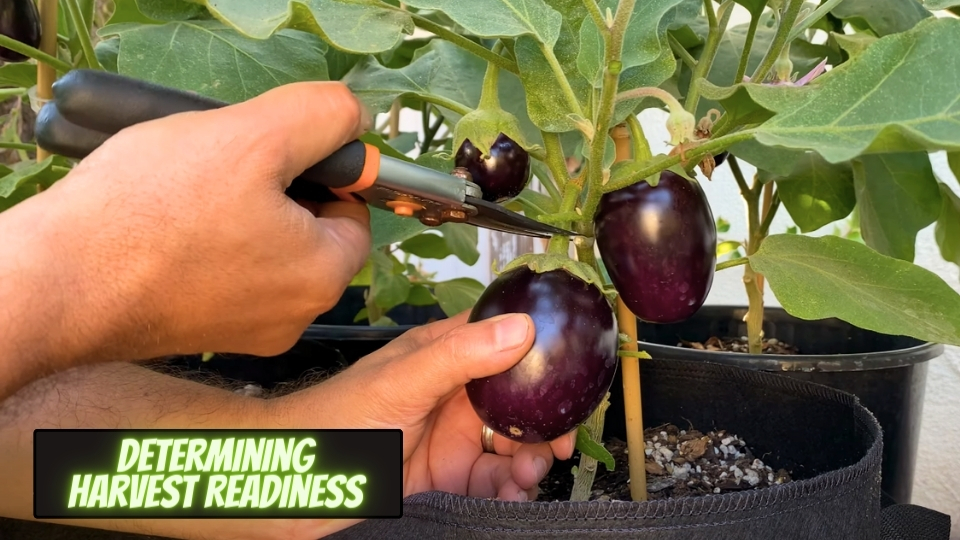
Creative Recipes And Cooking Ideas
Once you have harvested your container-grown eggplants, it’s time to get creative in the kitchen! Here are some inspiring recipe ideas to help you make the most of your harvest:
| Recipe | Description |
|---|---|
| Baba Ghanoush | A delicious Middle Eastern dip made with roasted eggplant, tahini, garlic, and lemon juice. Serve with pita bread or veggies for a healthy and flavorful snack. |
| Eggplant Parmesan | It is an Italian classic that features breaded and fried eggplant slices layered with tomato sauce, mozzarella cheese, and Parmesan. Baked to perfection, it’s a comforting and satisfying dish. |
| Grilled Eggplant Skewers | Marinate eggplant slices in olive oil, balsamic vinegar, garlic, and herbs, then thread them onto skewers and grill until tender and charred—a tasty vegetarian option for your next barbecue. |
These are just a few examples of enjoying your container-grown eggplants. Get creative in the kitchen and experiment with different flavors and cuisines to discover your favorite recipes.
Frequently Asked Questions On Container Eggplant Varieties
What Is The Best Eggplant Variety To Grow In Containers?
The best eggplant variety to grow in containers is the Japanese eggplant. It is compact, has a small fruit size, and thrives in confined spaces.
What Size Container Do You Need To Grow Eggplant?
You will need a container that is at least 18 inches in diameter and depth for growing eggplant.
How Many Eggplants Can You Plant In A 5 Gallon Bucket?
In a 5-gallon bucket, you can plant one eggplant.
Final Word
Container gardening provides a perfect solution to growing eggplants in limited spaces. With the wide range of compact and productive varieties available, gardeners can enjoy homegrown eggplants’ delicious taste and nutritional benefits. This is regardless of their outdoor space size.
Whether you choose the Patio Baby, Hansel, or Fairy Tale variety, these container eggplant varieties will thrive and delight your taste buds. Happy growing!
Video Source: https://www.youtube.com/watch?v=66onIQf_hZw&t=230s


